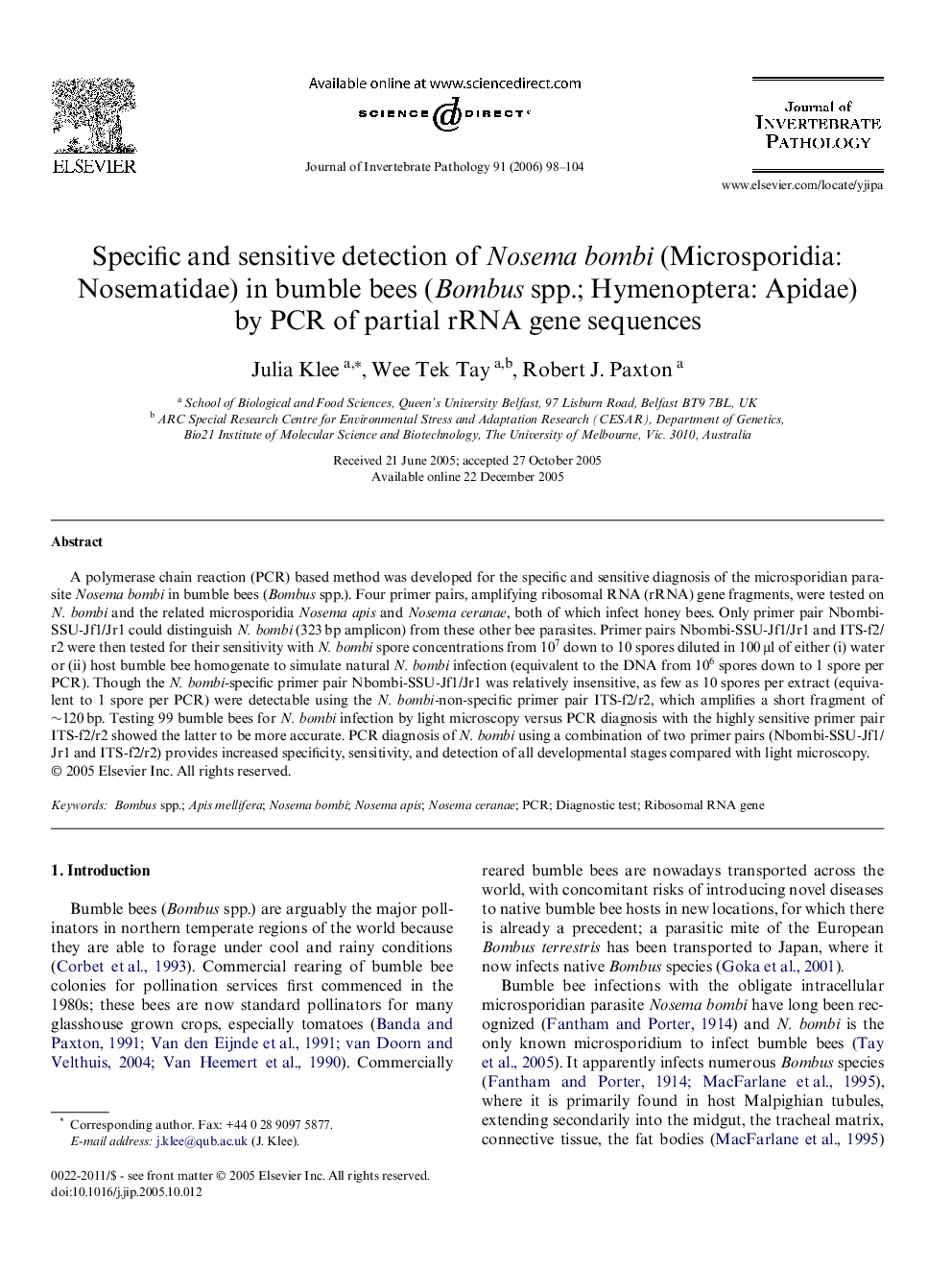| Article ID | Journal | Published Year | Pages | File Type |
|---|---|---|---|---|
| 4558862 | Journal of Invertebrate Pathology | 2006 | 7 Pages |
A polymerase chain reaction (PCR) based method was developed for the specific and sensitive diagnosis of the microsporidian parasite Nosema bombi in bumble bees (Bombus spp.). Four primer pairs, amplifying ribosomal RNA (rRNA) gene fragments, were tested on N. bombi and the related microsporidia Nosema apis and Nosema ceranae, both of which infect honey bees. Only primer pair Nbombi-SSU-Jf1/Jr1 could distinguish N. bombi (323 bp amplicon) from these other bee parasites. Primer pairs Nbombi-SSU-Jf1/Jr1 and ITS-f2/r2 were then tested for their sensitivity with N. bombi spore concentrations from 107 down to 10 spores diluted in 100 μl of either (i) water or (ii) host bumble bee homogenate to simulate natural N. bombi infection (equivalent to the DNA from 106 spores down to 1 spore per PCR). Though the N. bombi-specific primer pair Nbombi-SSU-Jf1/Jr1 was relatively insensitive, as few as 10 spores per extract (equivalent to 1 spore per PCR) were detectable using the N. bombi-non-specific primer pair ITS-f2/r2, which amplifies a short fragment of ∼120 bp. Testing 99 bumble bees for N. bombi infection by light microscopy versus PCR diagnosis with the highly sensitive primer pair ITS-f2/r2 showed the latter to be more accurate. PCR diagnosis of N. bombi using a combination of two primer pairs (Nbombi-SSU-Jf1/Jr1 and ITS-f2/r2) provides increased specificity, sensitivity, and detection of all developmental stages compared with light microscopy.
